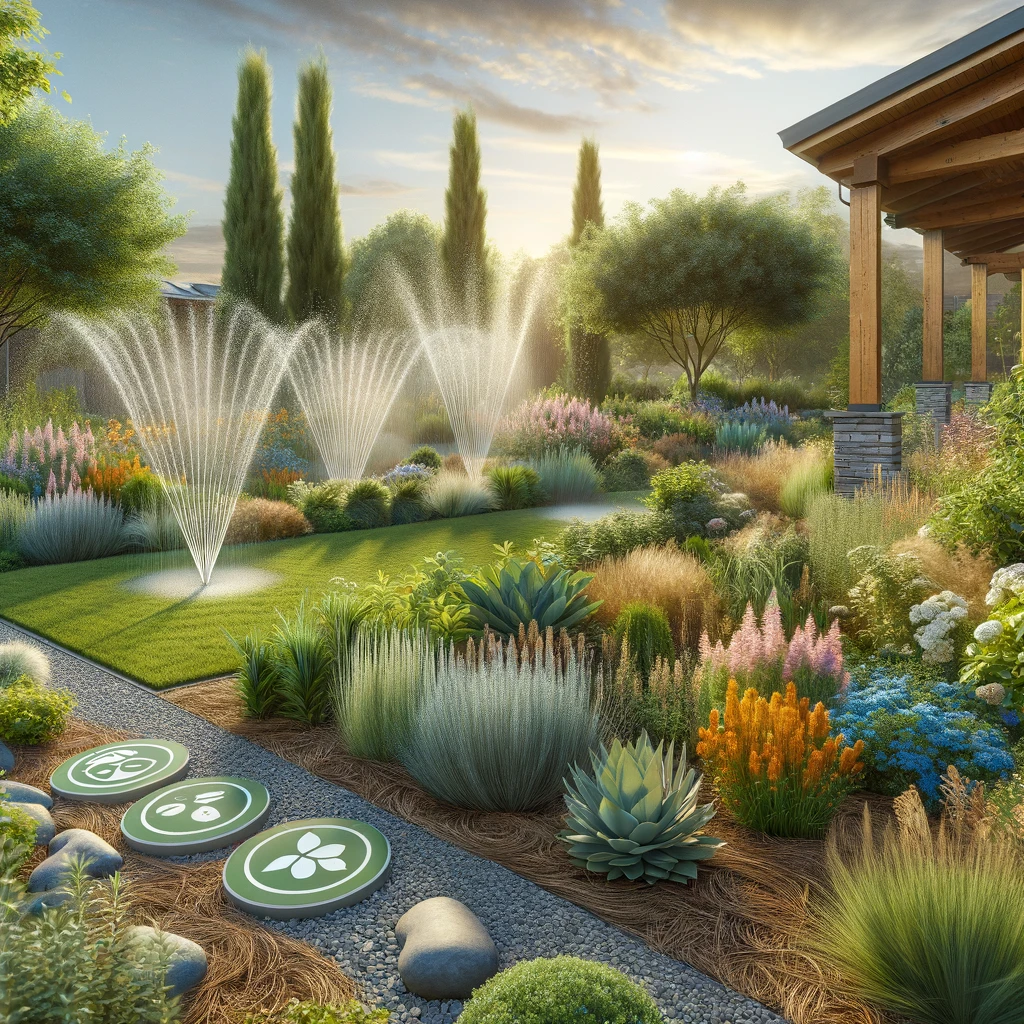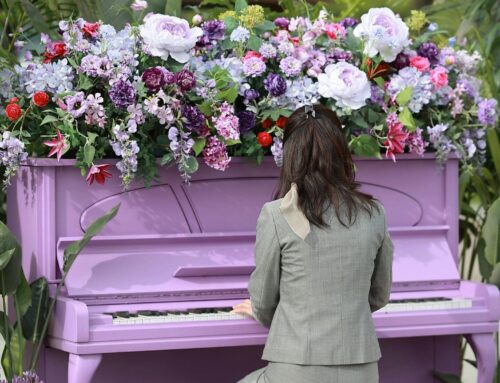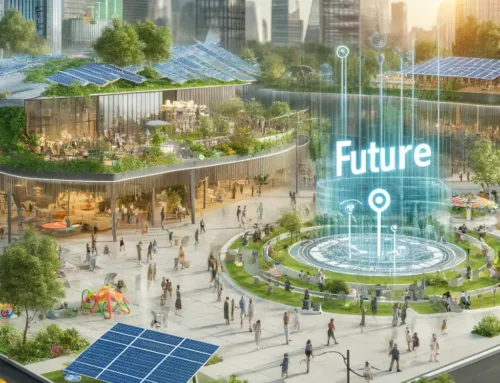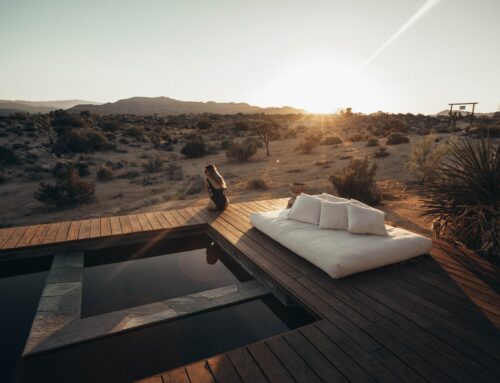At Harris & Company Landscape, sustainability is more than a buzzword. It’s a commitment to the earth and our future. Our blog, “Sustainable Landscape Design: Principles and Practices,” delves into how we can create beautiful, functional outdoor spaces while respecting and preserving the environment.
Embracing Sustainability in Landscape Design
Sustainable landscape design is a holistic approach that strongly emphasizes working harmoniously with nature, focusing on eco-friendly practices. Here are five key principles that guide this approach toward environmental protection, ecological balance, and efficient resource use:
- Prioritize native plants: Embrace sustainability in landscape design by choosing native plants. These plants not only enhance the beauty of your outdoor space but also support biodiversity by providing essential habitat and food for local wildlife.
- Efficient water use: Conserve water resources using eco-friendly irrigation systems and drought-tolerant landscaping techniques. Sustainable landscape design reduces water waste, making your outdoor area more environmentally responsible.
- Natural materials: Incorporate natural materials like stone, wood, and recycled products in your landscape design. This minimizes the environmental impact of construction and adds a rustic, eco-friendly aesthetic to your outdoor space.
- Minimize chemical use: Avoid the excessive use of chemicals, pesticides, and fertilizers in your landscaping practices. Reducing chemical inputs supports a healthier ecosystem and prevents harmful runoff into local waterways.
- Environmental stewardship: Embrace a holistic approach to landscape design that promotes environmental stewardship. Sustainable landscaping conserves resources and contributes to a healthier planet, safeguarding natural habitats and reducing our ecological footprint.
Choosing the Right Plants
Creating a sustainable and vibrant landscape begins with thoughtful plant selection. Here are five key considerations to guide you in choosing the right plants for your landscape design:
- Choose native plants: Opt for native plant species well-suited to your local climate and soil conditions, requiring minimal water and pesticide use while promoting a healthier ecosystem.
- Prioritize adaptability: Embrace plants that can thrive and adapt to changing environmental conditions, reducing the need for excessive maintenance and resources.
- Foster biodiversity: Select a diverse range of plants with varying heights, structures, and bloom times to create a multi-layered landscape that supports various wildlife species and creates a balanced ecosystem.
- Support pollinators and wildlife: Include pollinator-friendly plants and native food sources in your landscape design to attract and nourish butterflies, bees, birds, and other creatures, contributing to a vibrant web of life within your environment.
- Promote natural pest control: Fostering a diverse, balanced ecosystem with native plants can naturally control pest populations, reducing the need for chemical pesticides and promoting a healthier, more sustainable landscape.
Eco-Friendly Materials and Techniques
Landscape design goes beyond aesthetics. Embrace sustainability using the following approaches:
- Sustainable Hardscaping: Use recycled materials such as concrete, plastic, and wood to reduce resource consumption while maintaining durability and aesthetics in your landscape design.
- Natural elements: Incorporate natural stone, gravel, and wood to seamlessly blend with the environment, offering wildlife habitat and enhancing the overall visual appeal of your landscape.
- Organic gardening: Promote sustainability by composting kitchen scraps and yard waste to create nutrient-rich fertilizer, improving soil and plant health in your garden.
- Natural pest control: Opt for eco-friendly solutions like beneficial insects and traps to avoid harmful chemicals, creating a balanced ecosystem in your garden.
- Soil enrichment: Integrate cover crops to enrich the soil, suppress weeds, and prevent erosion, resulting in a flourishing garden and reduced environmental impact.
The Aesthetics of Sustainable Design
Commonly, people assume sustainable landscapes sacrifice beauty for environmental consciousness. However, this couldn’t be further from the truth. Sustainable design can harmoniously blend aesthetics and eco-friendliness, creating stunning and functional spaces. The benefits of sustainable design include:
- Balancing Act: Aesthetics can coexist with sustainability, using native plants, colors, textures, and sustainable hardscape materials.
- Edible Landscaping: Innovative integration of edible plants into ornamental gardens enhances visual appeal and provides fresh produce.
- Water-Wise Choices: Drought-tolerant plants and rain gardens add beauty and water efficiency to landscapes.
- Wildlife-Friendly Designs: Butterfly gardens and birdhouses attract biodiversity and create captivating outdoor spaces.
- Inspiring Case Studies: Real-world examples show how sustainable landscapes can transform spaces into works of art.
Dispel the myth that eco-friendly designs lack appeal, and create your stunning, environmentally responsible masterpiece.
Sustainable Maintenance Practices
Sustainable Maintenance Practices for Long-Term Landscape Care include:
- Organic Care Practices: Use organic fertilizers, compost, and mulching for soil health and practice integrated pest management.
- Low-Impact Maintenance: Employ drip irrigation, xeriscaping, and eco-friendly equipment to reduce environmental impact.
- Drought-Resistant Plants: Select native and drought-resistant species, group by water needs, and incorporate rain gardens.
- Soil Health: Improve soil structure, reduce compaction, and encourage beneficial microorganisms for resilience.
- Carbon Sequestration: Plant trees for shade and urban forestry to sequester carbon and combat the heat island effect.
Conclusion
Sustainable landscape design is a developing field that marries aesthetics with environmental responsibility. At Harris & Company Landscape, we are passionate about creating beautiful landscapes that contribute to our planet’s health.





